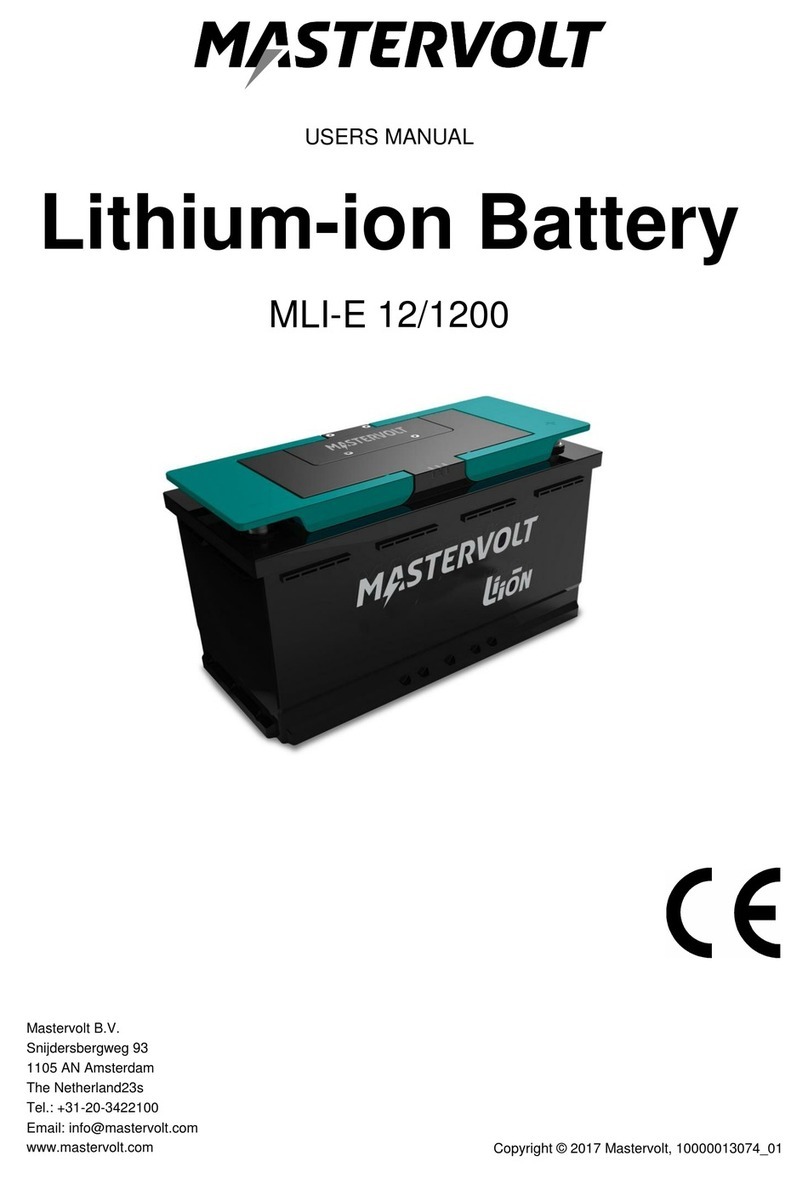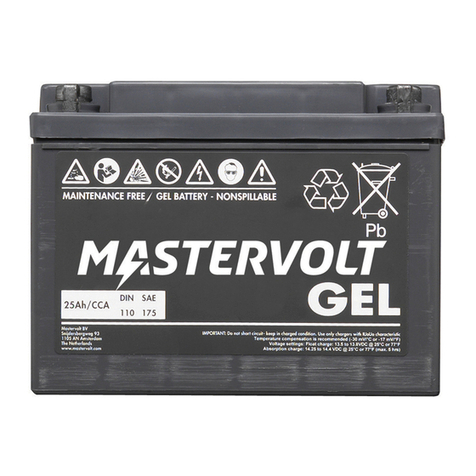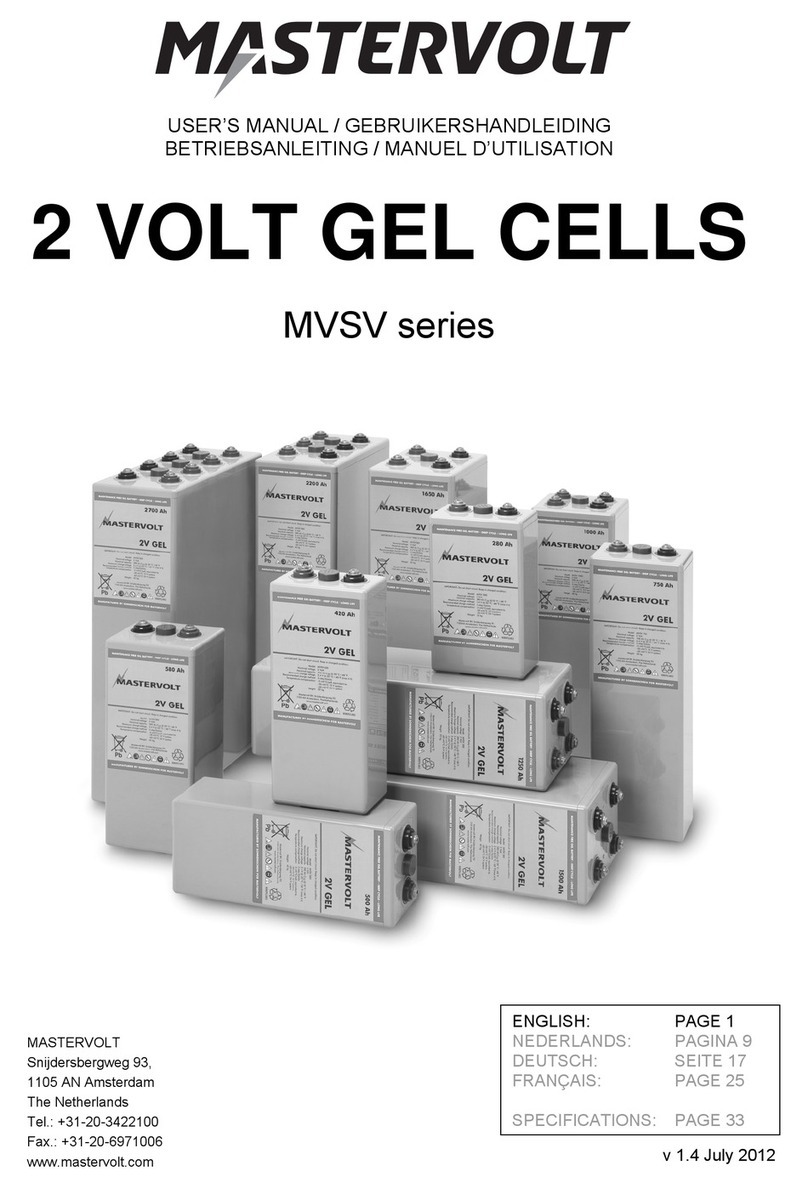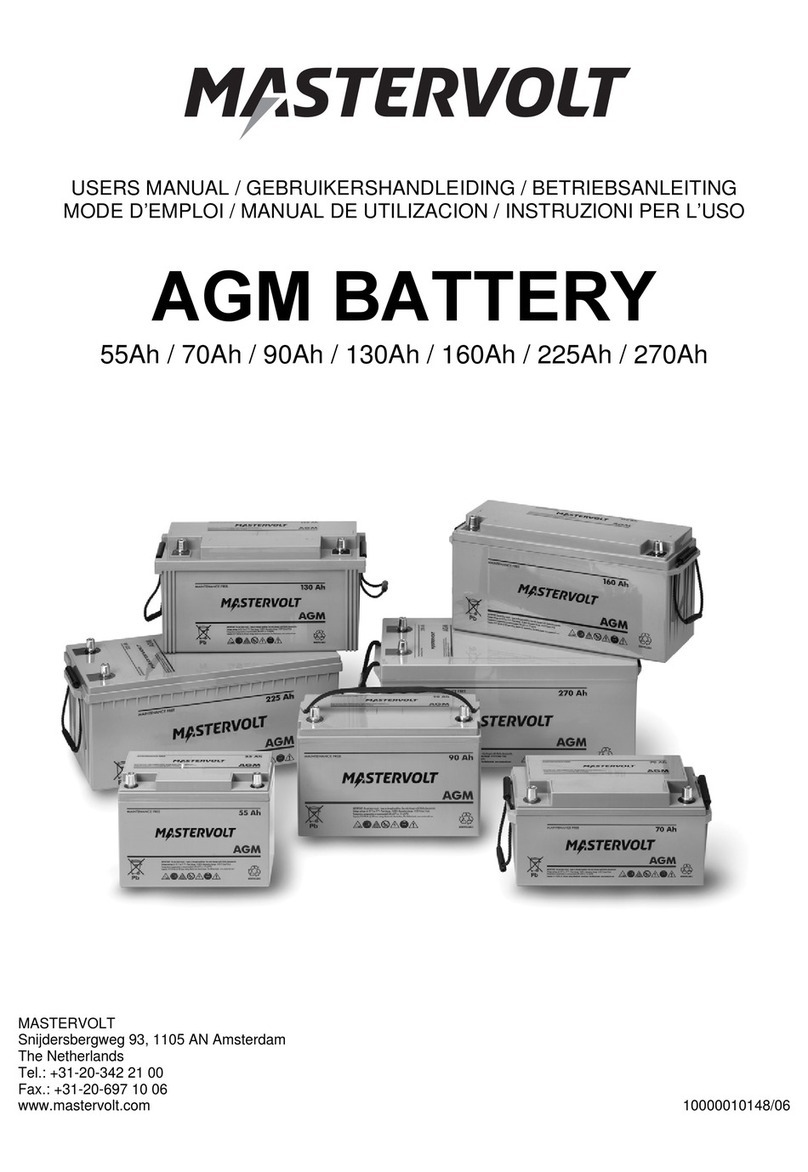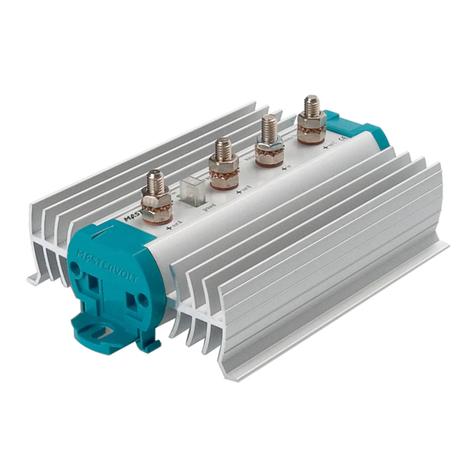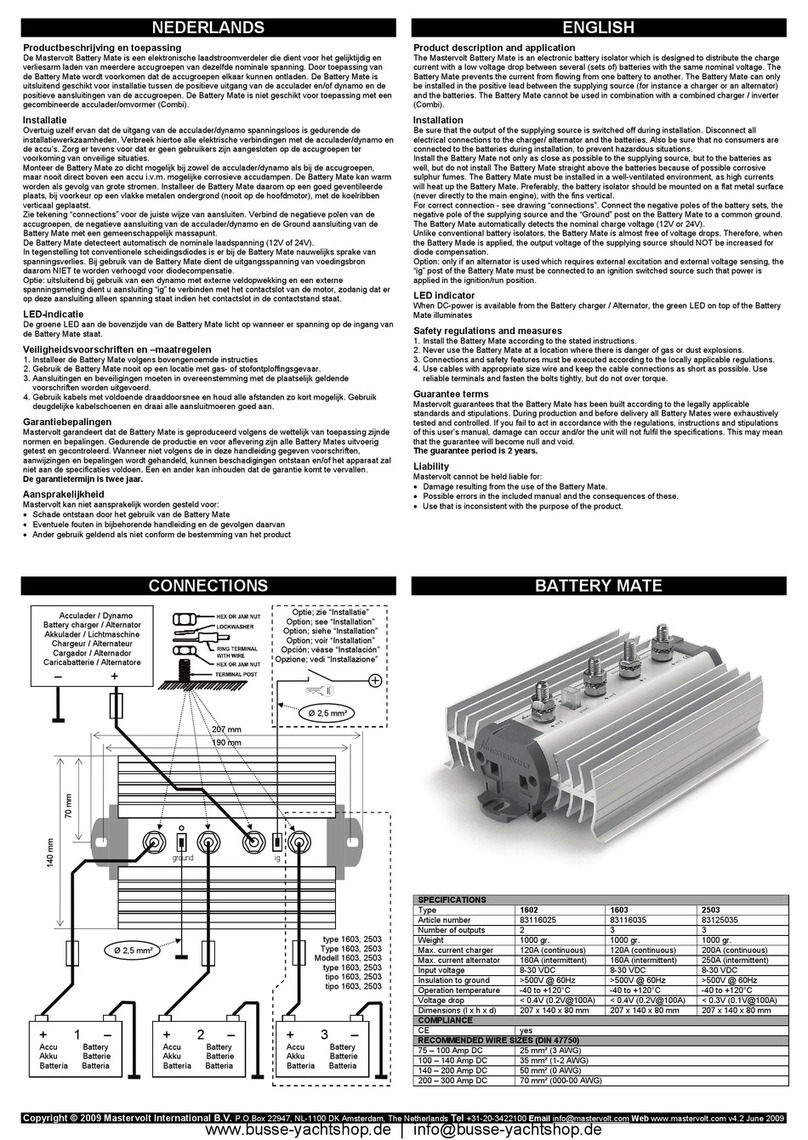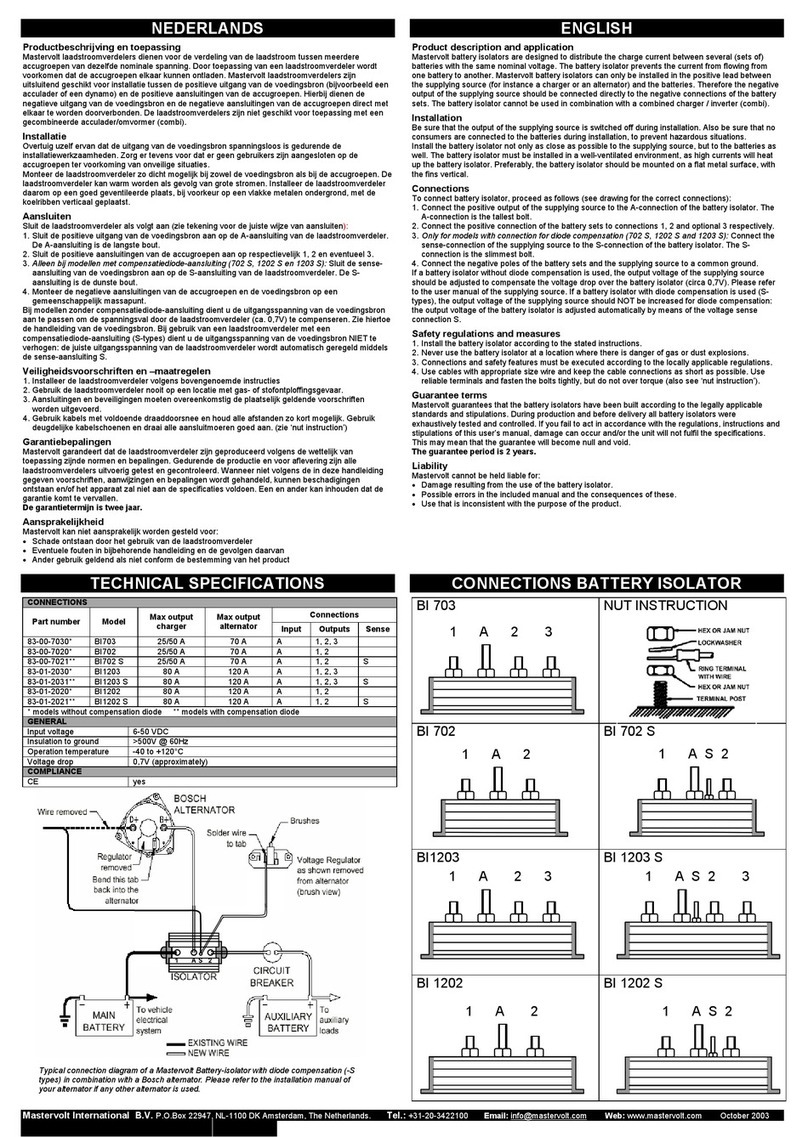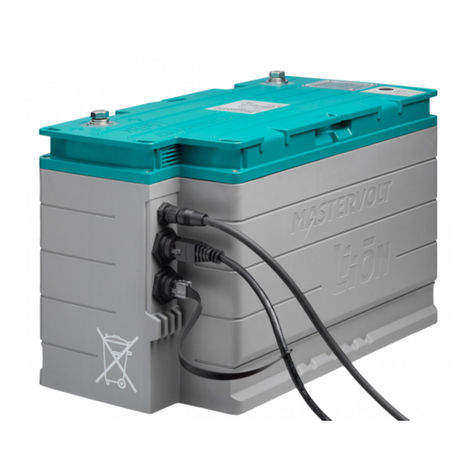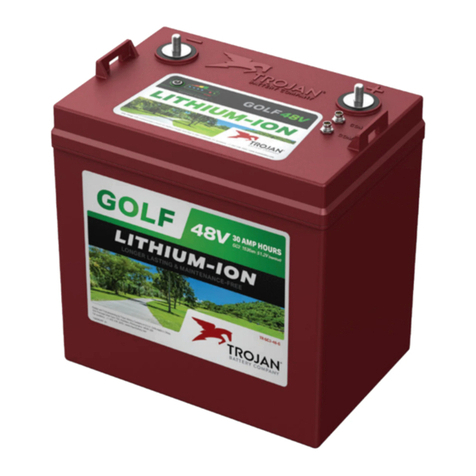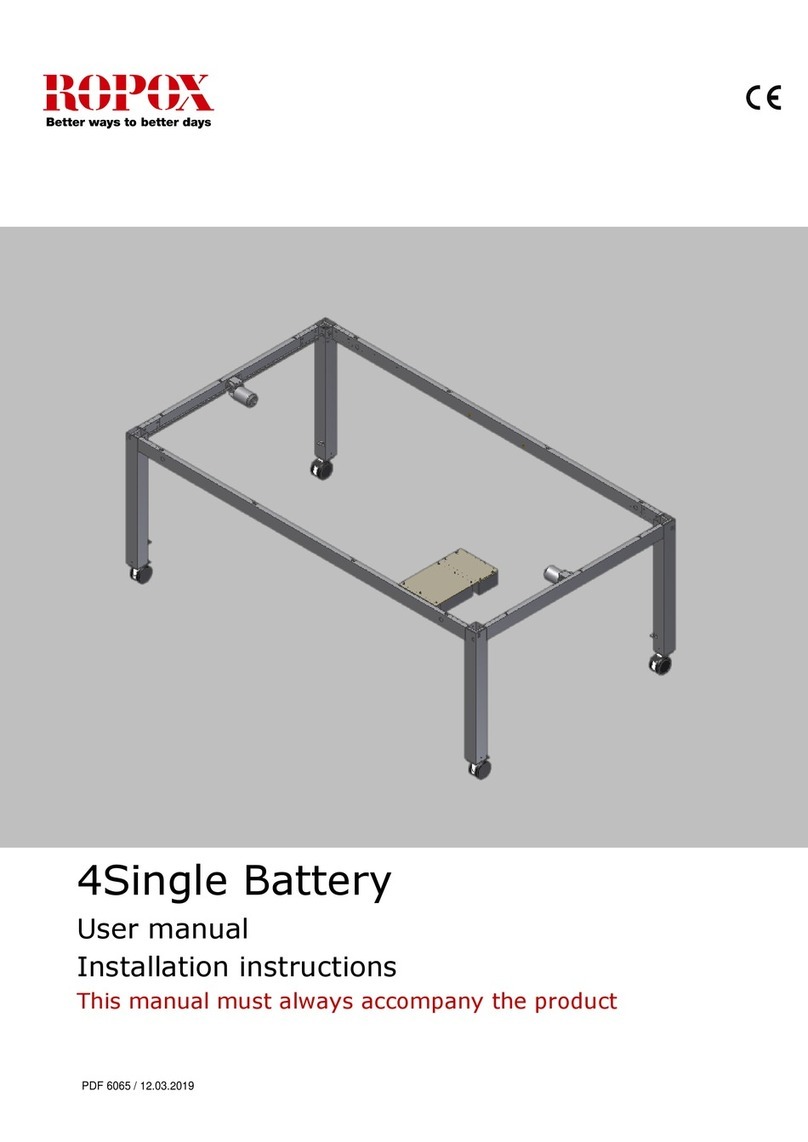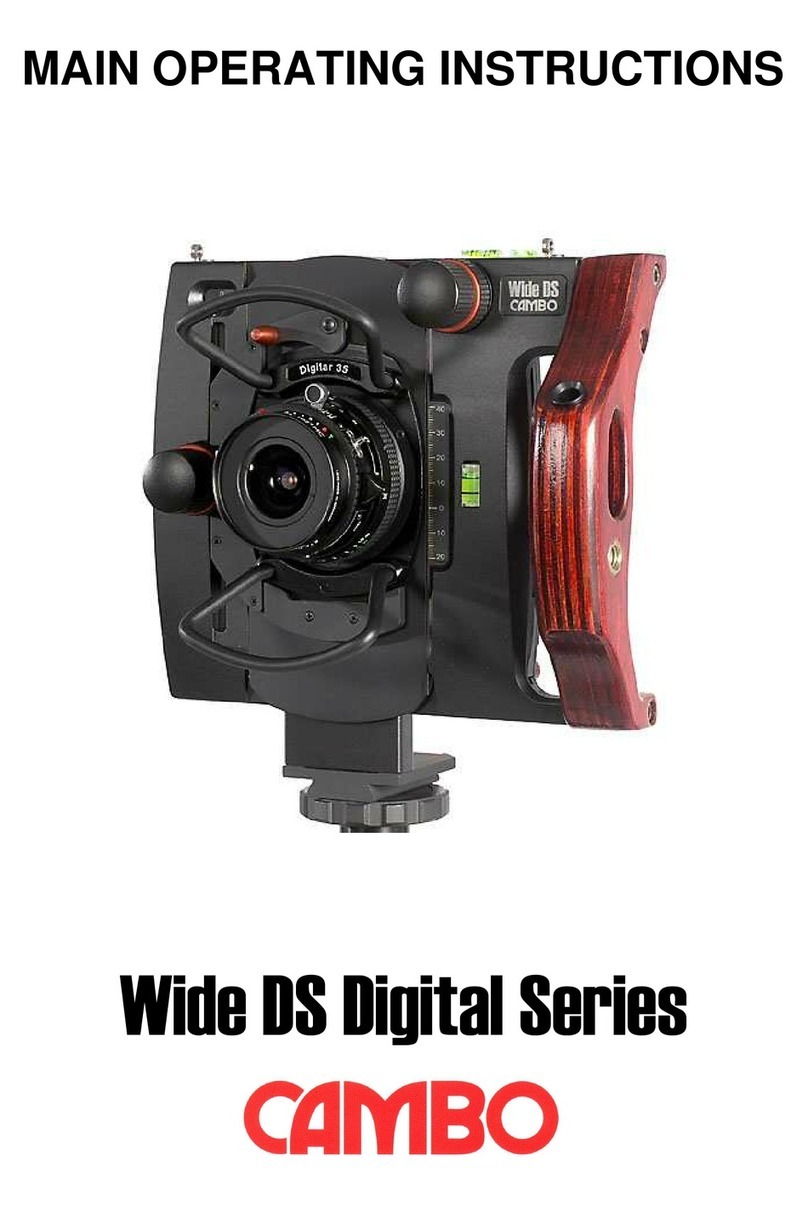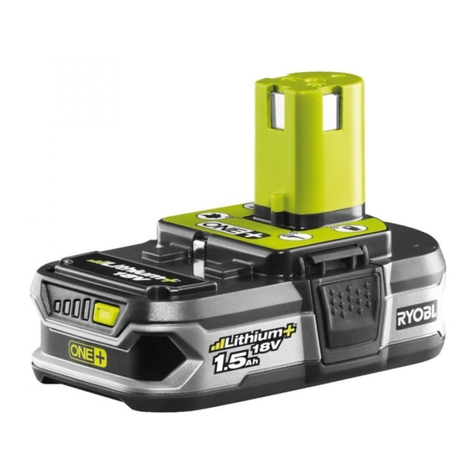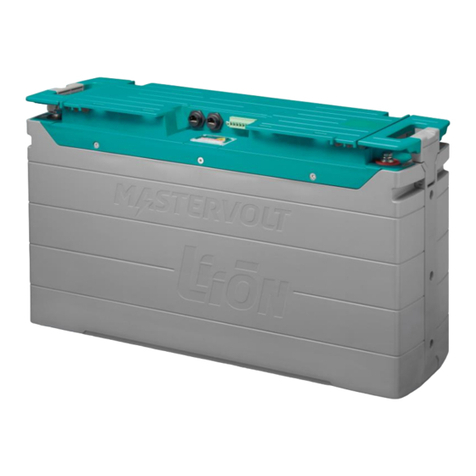
SAFETY GUIDELINES AND MEASURES
EN / April 2014 / Lithium-ion Battery MLi Ultra / Copyright © 2014 Mastervolt 5
1 SAFETY GUIDELINES AND MEASURES
1.1 GENERAL RULES
Observe these instructions and keep them
located near the Li-ion Battery for future
reference.
Work on the Li-ion Battery should be carried out
by qualified personnel only.
While working on the Li-ion Battery wear
protective eye-glasses and clothing.
Any uncovered battery material such as
electrolyte or powder on the skin or in the eyes
must be flushed with plenty of clean water
immediately. Then seek medical assistance.
Spillages on clothing should be rinsed out with
water.
Explosion and fire hazard. Terminals of the Li-
ion Battery are always alive; therefore do not
place items or tools on the Li-ion Battery. Avoid
short circuits, too deep discharges and too high
charge currents. Use insulated tools. Do not
wear any metallic items such as watches,
bracelets, et cetera. In case of fire, you must
use a type D, foam or CO2fire extinguisher.
Never try to open or dismantle the Li-ion
Battery. Electrolyte is very corrosive. In normal
working conditions contact with the electrolyte is
impossible. If the battery casing is damaged do
not touch the exposed electrolyte or powder
because it is corrosive.
Too deep discharges damage the Li-ion battery
seriously and can even be dangerous.
Therefore, use of an external safety relay is
obligatory. Refer to chapter 4.
Li-ion Batteries are heavy. If involved in an
accident they can become a projectile! Ensure
adequate and secure mounting and always use
suitable handling equipment for transportation.
Handle with care because Li-ion Batteries are
sensitive to mechanical shock.
Li-ion batteries can be charged with a voltage
up to 14.6 V (29.2 V). On the other hand, Li-ion
batteries can be discharged down to 11.0
(22.0V). Note that this voltage range (11.0-
14.6V or 22.0-29.2V) is larger than you may
expect from other battery types such as lead-
acid batteries. Be aware that these voltages
may exceed the permitted voltages of the
connected load(s). Therefore appropriate
measures must be taken to avoid damage to
the connected load(s).
If charged after the Li-ion battery was
discharged below the Discharge cut-off voltage,
or when the Li-ion battery is damaged or
overcharged, the Li-ion battery can release a
harmful mixture of gasses such as phosphate.
Non-compliance with operating instructions, repairs
made with other than original parts, or repairs made
without authorization render the warranty void.
1.2 TRANSPORTATION WARNINGS
The Li-ion battery must be transported in its
original or equivalent package and in an upright
position.
If the battery is in its package, use soft slings to
avoid damage.
Do not stand below a Li-ion battery when it is
hoisted.
Never lift the battery at the terminals, only lift
the battery at the handles.
Batteries are tested according to UN Handbook of Tests
and Criteria, part III, sub section 38.3
(ST/SG/AC.10/11/Rev.5).
For transport the batteries belong to the category UN3480,
Class 9, Packaging Group II and have to be transported
according to this regulation. This means that for land and
sea transport (ADR, RID & IMDG) they have to be packed
according to packaging instruction P903 and for air
transport (IATA) according to packaging instruction P965.
The original packaging satisfies these instructions.
1.3 DISPOSAL OF LI-ION BATTERIES
Batteries marked with the recycling symbol must be
processed via a recognized recycling agency. By
agreement, they may be returned to the manufacturer.
Batteries must not be mixed with domestic or industrial
waste.
non-s
illable
